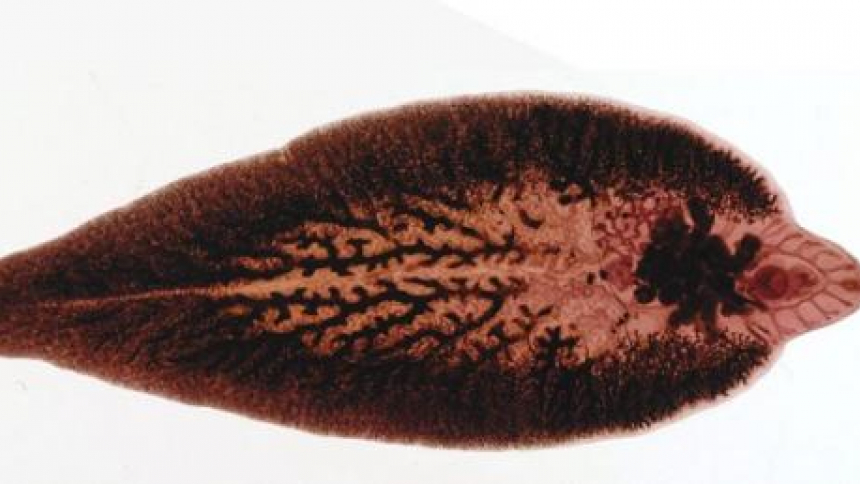Chemical pollution can disrupt parasite transmission by directly and indirectly effecting hosts and parasites. Chemical pollution, especially pesticide application, is pervasive in freshwater communities and has important influences on parasite dynamics. A core challenge to predicting the influence of pesticides on parasite transmission is disentangling effects among types of pesticides. Thus, a team of researchers, led by Samantha Rumschlag (University of Notre Dame and University of South Florida) and including Peter Hudson from Penn State CIDD, designed an experiment to determine the effects of pesticides on parasite exposure (trematodes in the family Plagiorchidae) and host susceptibility (larval amphibians). The team evaluated these effects across different pesticide types, chemical classes, and individual pesticides. Their main goal was to identify if (and which) pesticides share consistencies in their effects on aquatic ecosystems, and thus provide evidence to predict larger scale pesticide impacts.
Rumschlag et al. used a randomized block design of aquatic mesocosms for their experiment. Each mesocosm was filled with algae, larval amphibians, and other aquatic invertebrates. Additionally, trematode-infected snails were added to mesocosms. To test their hypotheses, the team evaluated the effects of 12 pesticides, nested in four pesticide classes (chloroacetanilides, triazines, carbamates, organophosphates) and two pesticides types (herbicides, insecticides), on larval amphibian exposure and susceptibility to parasitic trematodes.
The researchers found that different pesticide classes differentially impacted the survival of snail predators. The negative effects on these predators allowed the snail population, and thus the pool of susceptible hosts, to grow (top-down). There were varying effects of pesticide class on the survival of the susceptible population of aquatic organisms. Similarly, different pesticide classes differentially impacted food resources in the mesocosms, which subsequently altered host and trematode population dynamics (bottom-up). Herbicides slowed development of larval amphibians, causing them to spend more time in susceptible early life stages, and also directly reduced eosinophil densities; together, this caused an increased trematode load in juvenile amphibians.
To summarize, Rumschlag et al. demonstrated that pesticide class and type both affect the exposure and susceptibility of aquatic invertebrates, but the specific top-down and bottom-up effects are more attributed to pesticide class. Herbicides also have the ability to effect host development and immune response. Pesticide production is predicted to increase up to five-times by the year 2050 (Tilman et al. 2001), therefore, identifying the mechanisms underlying changes in parasite transmission cycles is critical for predicting the spread and impacts of parasite infection. This study reveals that pesticides have cascading effects on aquatic ecosystems that should be considered in agricultural practices.
Written by Ellen Brandell
Photo of trematode.
Publication Details
S.L. Rumschlag, N.T. Halstead, J.T. Hoverman, T.R. Raffel, H.J. Carrick, P.J. Hudson, J.R. Rohr
Effects of pesticides on exposure and susceptibility to parasites can be generalised to pesticide class and type in aquatic comm
Journal: Ecology Letters
Rumschlag et al. 2019. Effects of pesticides on exposure and susceptibility...Ecology Letters.
DOI Reference




